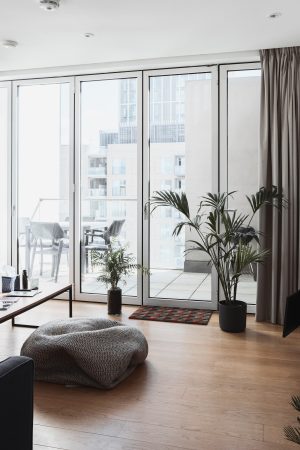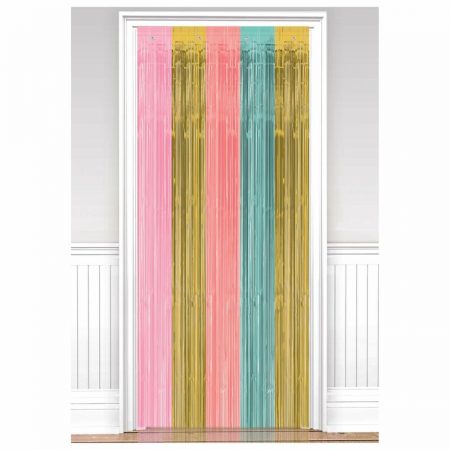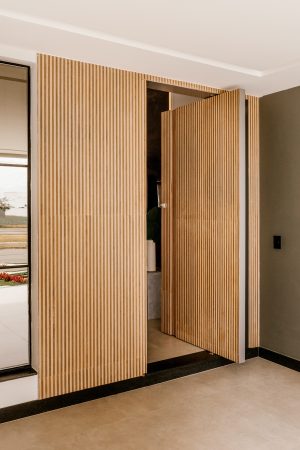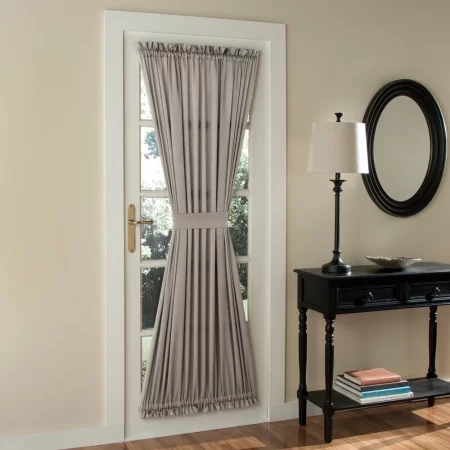Should Baseboards Match Door Trim?
Believe it or not, one of the most important choices you’ll make when designing your home is what type of baseboards and door trim to use. Should they be the same color and style, or should you mix and match?
There are plenty of options, whether you like a traditional matching style or something more colorful. Keep reading to learn more about the pros and cons of each option so you can make the best decision for your home!
Choosing Trim and Baseboards—What to Think About
When it comes to home decor, there are a lot of choices to make – and one of them is what color and style your baseboards and door trim should be. While you’re choosing trim and baseboards, there are a few things you should keep in mind.
First, you want to take into account how large your room is, and whether the size of the room will support an ornate and colorful door trim, or if you should stick to a minimal look.
You should also consider how the materials and design of your trim and baseboards will affect the colors you choose.
From the size and style of the room to your own personal taste, be sure to do some research and a little soul searching to determine the exact look you’re going for, before you reach for the paint brush.
The Size of the Room
When considering the size of your baseboards and trim, the first thing you need to look at is the size of the overall room. This will help you determine how much room you have to work with.
In larger rooms with more characteristics and features (high ceilings, bay windows, etc.) you can get away with more colorful baseboards and trim.
For larger rooms, you may want to choose taller and wider baseboards and paint them a contrasting color. The added pop of color in a larger room will help add visual interest and make the room feel cozier.
Smaller rooms need a more delicate touch. Baseboards and door trim that are too large or ornate in a small room can make the space feel cluttered. Stick to thin, streamlined baseboards and door trim with minimal detailing.
Your Decor Style and Personal Taste
Of course, your choice of baseboard really comes down to which style you prefer. First, consider the style of your home as it is now.
If you have a traditional home, you might want to choose trim and baseboards that are classic and timeless, in a matching neutral color. But if you’re the type to take a few design risks, then try contrasting your door trim with a different color.
If you’re going for a more modern or minimalist look, you might want to choose less ornate and more sleek trim and baseboards and stick to matching colors.
Material of the Door Trim and Baseboards
Trim and baseboards can be made from a variety of materials, including wood, plastic, and metal. Each material has its own advantages and disadvantages, so make sure to choose the one that is right for you based on practicality and your own priorities.
Wooden trim and baseboards are easy to paint and maintain, and you can change the color of it whenever you choose. But other materials, like vinyl, metal, or plastic, may not be so easy to change.
If you have wooden baseboards, but the door trim is metal and won’t take paint easily, then one solution is to choose a contrasting baseboard color that works well with the color of the trim. That way the room still looks and feels cohesive, and you can use the materials you have to your advantage.
Why Baseboards and Trim Should Match
Matching your baseboards and door trim can be a simple and inexpensive way to give your home a fresh, new look without making the room feel overwhelming.
Not only will a matching color scheme give your home a more polished and put-together look, but it will also make the space feel more cohesive. A simple, neutral design ties the whole room together and adds a touch of luxury.
Matching your baseboards and trim together also helps to make the room feel more calm, even if you have more ornate and detailed trim. If you have a more traditional design style or you want a look that’s a bit more formal, then go for a matching look.
Why Baseboards and Trim Should Not Match
Many homes feature matching baseboards and door trim—in fact, it’s much more common to see matching trim and baseboards. But there is no rule saying that they should be identical. In fact, there are many good reasons why you might choose to mix and match these elements.
For one, baseboards and door trim come in a variety of different styles, so you can mix and match to create a look that is uniquely your own. This is a highly customizable area of your home, so if you want to create a custom look for your home, your baseboards and door trim are a great place to start.
Additionally, using different styles of baseboards and door trim can add visual interest to your home. If your home has a lot of straight lines, you can use baseboards and door trim with curves to add some contrast. Or if your home is mostly adorned with neutral colors, you can use baseboards and door trim in a brighter
Another reason to avoid matching baseboards and door trim is that it can make a space look dated. Baseboards and door trim are usually made from the same material, so matching them can give a space a dated, matchy-matchy look.
Baseboard and Door Trim Style Options
Monochrome
Probably the simplest and most popular approach, painting your baseboards and trim the same color gives your home a clean and sophisticated look.
You can choose any color that you like for your matching monochrome baseboards, but neutrals, earth tones, and desaturated hues are a great way to create a sophisticated and calm look. Brighter colors are a good idea when you want to make a statement.
A monochrome look is also a great option if your baseboards or trim have ornate detailing or a busy design. Crown molding with lots of details can make a room feel dated or distracting, so stick with neutral colors that don’t contrast too much with the wall color.
Dark Trim on Light Walls
If you plan on keeping your walls neutral and light, then one way to inject some color into the room in an unexpected way is by painting your baseboards and trim a rich, dark color. Adding dark trim to light walls is a great way to add some visual interest to your space.
Dark trim can also be used to accentuate architectural features or highlight certain areas of your space. It can also help to make a small space look larger, as the dark trim will create the illusion of a wider frame.
Choose a trim color in a darker version of your wall color. For example, if you have light beige walls, you could use a dark color like chocolate brown or dark tan. Or, if you want a more monochrome look, paint the trim only a few shades darker than the wall color. This will help the room feel more cohesive and put-together, while still adding color and interest to the space.
White Trim on Dark Walls
Dark walls help to create a moody and dramatic atmosphere in just about any room in your house, but if you’re looking for a way to add some dimension to your dark walls, consider using light trim.
Light trim can help to create the illusion of depth, making your dark walls appear more complex and interesting, in the same way that adding colorful wall art or curtains to darker walls can help break up the color.
This type of trim can also help to brighten up a room and make it feel more open and airy by contrasting the darker walls. The white trim helps to bounce around natural light throughout the room and keep the room from feeling too dark.
Contrasting Colors
If you have light, neutral walls and you’re looking to add some visual interest to the room, consider adding contrasting colors to your baseboards and trim. This means painting your baseboards a separate color from your door trim, and both colors should contrast against the wall color.
Take a look at this example: the door trim matches the color of the door, helping the door to pop out away from the wall and make it appear larger. It’s a rich, deep green that brightens up the room.
The baseboards, however, are painted a soft white that is just a shade or two lighter than the wall color, which helps the baseboards to blend in with both the wall and the floor.
How to Achieve a Cohesive Look with Your Baseboards and Door Trim
Your baseboards and door trim don’t have to match perfectly, but there are a few things you can do to create a cohesive look. So how do you achieve a cohesive look with your baseboards and door trim? The key is to choose the right style for your home and then be consistent with the finishes.
If you have a more traditional style, you’ll want to stick with trim that has clean lines and simple details. For a more contemporary look, you can go with baseboards and door trim that are a bit more unique and eye-catching.
Once you’ve decided on the style of your trim, the next step is to choose a color. You can either paint your trim to match the walls or go with a contrasting color. But make sure that the contrasting color is complementary to the wall colors by referencing the color wheel.
Final Thoughts
To be clear, there is no right or wrong answer when it comes to matching baseboards and door trim. It is entirely up to you and the look that you are going for.
If you want a cohesive look, then matching the trim is a good idea. If you want a more eclectic look, then you can mix and match different colors and styles. You should also consider how the baseboards and trim contrast against the rest of the room.
In the end, the best approach is to do some research on different looks and go with your gut!







